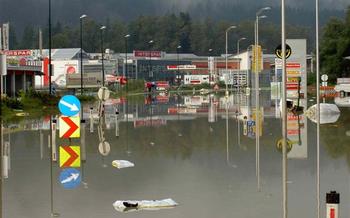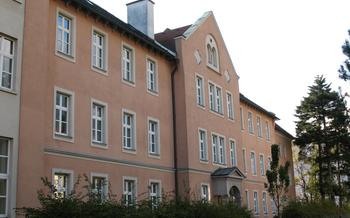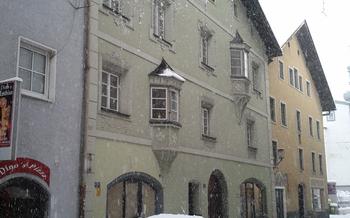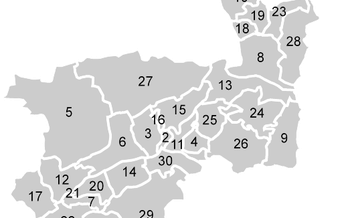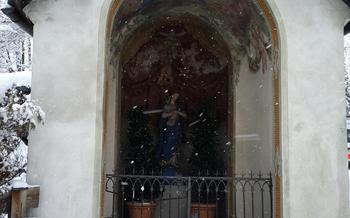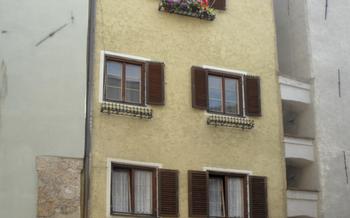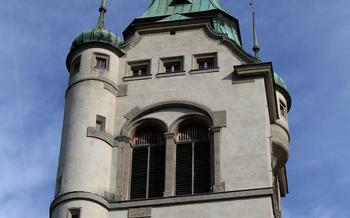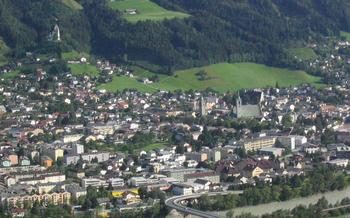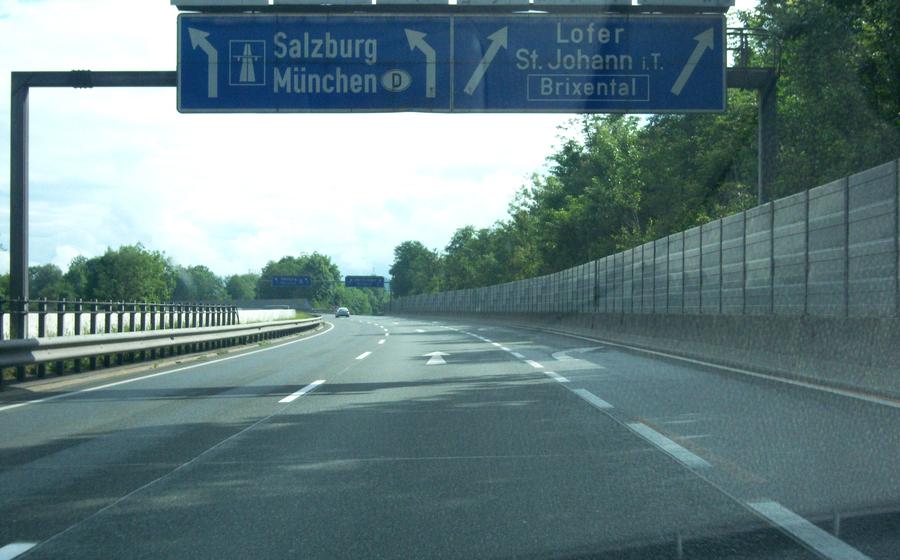
Silver Mine Schwaz
- The Silver Mine Schwaz
- History of the Silver Mine
- Schwaz Silver Mine Museum
- The Mining Town of Schwaz
- Getting to the Silver Mine
- Public transportation
- Driving directions
- Parking information
- Accessibility for disabled visitors
- Silver Mine Schwaz Tours
- What to Wear and Bring
- Tips for Visiting the Silver Mine
- Highlights of the Silver Mine Tour
- Photography and Videography
- Souvenirs and Gifts
- Food and Drinks
- Nearby Attractions
- Accessibility for Disabled Visitors
- Insider Tip: Make the Most of Your Visit
The Silver Mine Schwaz
The Silver Mine Schwaz, located in the heart of the Tyrolean Alps, is a fascinating historical site that offers visitors a unique glimpse into the region's rich mining heritage. With its extensive network of tunnels, shafts, and chambers, this former silver mine provides an immersive and educational experience for people of all ages.
Historical Significance Once the largest silver mine in Europe, the Schwaz Silver Mine played a pivotal role in the development of the region. Silver mining in Schwaz began in the 15th century and reached its peak in the 16th century, when the mine was responsible for producing around 85% of the world's silver. The wealth generated by silver mining transformed Schwaz into a flourishing town and contributed significantly to the economic prosperity of the Tyrolean region.
Guided Tours Today, visitors can explore the Schwaz Silver Mine through guided tours that take them deep into the labyrinthine tunnels and chambers. The tours provide an in-depth look at the history, geology, and mining techniques used during the mine's operation. Visitors can see the original mining equipment, learn about the harsh working conditions faced by the miners, and experience the darkness and claustrophobia of the underground world.
Mining Techniques The Schwaz Silver Mine employed various mining techniques to extract silver from the ore. Visitors can see examples of these techniques, such as hand-drilling, blasting, and timbering, which were used to create the tunnels and shafts. They can also learn about the innovative water management systems that were developed to drain the mine and prevent flooding.
Silver Extraction Process Once the silver ore was extracted from the mine, it was processed to separate the silver from the other minerals. Visitors can see the remains of the ore processing facilities, including the crushing mills, washing plants, and smelting furnaces. They can also learn about the complex chemical processes that were used to extract pure silver from the ore.
History of the Silver Mine
The history of the Schwaz Silver Mine is a tale of discovery, economic prosperity, and eventual decline.
Discovery of Silver: The story begins in the 15th century when silver was discovered in the Schwaz area, attracting miners and prospectors from across the region. The Schwaz mines quickly became one of the most important sources of silver in Europe.
Economic Importance: The silver from Schwaz played a crucial role in the economic development of the region. It was used to mint coins, finance trade, and fund various construction projects. The wealth generated by the mines transformed Schwaz into a thriving city, attracting merchants, craftsmen, and artists.
Mining Operations: The Schwaz mines were operated using traditional mining techniques, which involved digging tunnels, shafts, and galleries. Miners used simple tools such as picks, shovels, and hammers to extract the silver ore. The working conditions were harsh and dangerous, with miners facing risks of cave-ins, flooding, and exposure to toxic gases.
Decline and Closure: In the 19th century, the Schwaz mines began to decline due to the discovery of richer silver deposits in other parts of the world. The mines gradually became less profitable, and mining operations were eventually suspended in 192The closure of the mines had a significant impact on the local economy, leading to widespread unemployment and poverty.
Schwaz Silver Mine Museum
The Schwaz Silver Mine Museum is a must-visit for anyone interested in learning more about the history of silver mining in the region. The museum houses a collection of exhibits that tell the story of the mine's discovery, its economic importance, and the mining techniques and processes used over the centuries. Visitors can see original mining equipment, tools, and artifacts, as well as documents and photographs that provide a glimpse into the lives of the miners who worked in the mine. The museum also offers interactive displays that allow visitors to experience the sights, sounds, and smells of the mine, and learn about the environmental impact of silver mining. Educational programs and guided tours are available for groups and individuals, providing a deeper understanding of the mine's history and significance.
The Mining Town of Schwaz
Schwaz, a picturesque medieval town nestled in the heart of the Tyrolean Alps, owes its existence to the discovery of silver in the 15th century. The town's rich history is intertwined with the mining industry, which shaped its architecture, economy, and culture.
Medieval Architecture:
Schwaz boasts a wealth of well-preserved medieval buildings that showcase the town's rich past. The historic town center, with its charming cobbled streets and colorful facades, offers a glimpse into the town's mining heritage.
Historic Buildings:
The Rathaus (Town Hall), built in the 15th century, stands as a testament to the town's prosperity during the silver mining boom. The Fuggerhaus, a former trading house of the wealthy Fugger family, is another notable landmark, showcasing the town's economic importance.
Town Square:
The heart of Schwaz is the Marktplatz (Town Square), where the weekly market has been held since the Middle Ages. Surrounded by historic buildings, the square is a vibrant hub of activity, offering a taste of local culture and cuisine.
Cultural Significance:
Schwaz's mining heritage has left an indelible mark on its cultural identity. The town's museums, festivals, and traditions celebrate the history and legacy of silver mining, preserving the town's unique heritage for future generations.
Getting to the Silver Mine
Public transportation
The Silver Mine Schwaz is easily accessible by public transportation. From Innsbruck, take the ÖBB train to Schwaz and then the 4124 bus to the Silberbergwerk Schwaz stop. From Munich, take the Deutsche Bahn train to Kufstein and then the 4060 bus to the Schwaz Bahnhof stop.
Driving directions
If you are driving, take the A12 Inntal Autobahn and exit at Schwaz. Follow the signs to the Silberbergwerk Schwaz.
Parking information
There is a free parking lot available at the Silver Mine Schwaz.
Accessibility for disabled visitors
The Silver Mine Schwaz is wheelchair accessible. There is a lift that takes visitors down into the mine and the tour route is mostly flat and accessible. Please contact the mine in advance to make arrangements for any special assistance you may need.
Silver Mine Schwaz Tours
Visitors to the Schwaz Silver Mine can choose from a variety of guided tours to explore the mine's fascinating history and workings.
Standard Guided Tours
The standard guided tours are available daily and last approximately 1 hour and 15 minutes. During these tours, visitors will be led by an experienced guide through the mine's tunnels and chambers, where they will learn about the history of silver mining in Schwaz and see the original mining equipment that was used.
Duration and Cost of Tours
The standard guided tours cost €12 for adults, €8 for children aged 6-15, and €10 for students and seniors.
Advance Reservations
Advance reservations are recommended, especially during peak season, to guarantee a spot on a tour. Reservations can be made online or by phone.
Special Tours for Groups
Special guided tours are available for groups of 10 or more people. These tours can be customized to meet the specific interests of the group and can include additional features such as a visit to the mine's museum or a ride on the mine train.
What to Wear and Bring
When visiting the Silver Mine Schwaz, it is important to dress appropriately and bring the necessary items to ensure a comfortable and enjoyable experience.
Clothing and Footwear: - Wear sturdy and comfortable shoes or hiking boots with good traction, as the mine can be slippery and uneven. - Dress in layers, as the temperature inside the mine can be cool and damp, even in summer. - Avoid wearing loose clothing or jewelry that could get caught on mining equipment.
Camera: - Bring a camera to capture the unique sights and experiences inside the mine. - Use a flash or headlamp to illuminate the dark corners and capture clear photos.
Water Bottle: - Bring a water bottle to stay hydrated, especially if you plan on taking a long tour.
Flashlight or Headlamp: - A flashlight or headlamp is essential for navigating the dark and narrow tunnels of the mine. - Make sure your light source is in good working condition before entering the mine.
Tips for Visiting the Silver Mine
To make the most of your visit to the Silver Mine Schwaz, here are a few tips to keep in mind:
Plan Your Visit: Allow enough time for your visit, as the guided tours can last up to two hours. It's recommended to arrive at least 15 minutes before your scheduled tour time to ensure a smooth check-in process.
Dress Appropriately: Wear comfortable shoes, as you'll be doing a fair amount of walking and climbing during the tour. The mine can also be cold and damp, so it's advisable to dress in layers or bring a jacket.
Be Prepared for the Conditions: The mine is dark and humid, so be prepared for the low-light conditions and the potential for getting wet or dirty. It's a good idea to bring a flashlight or headlamp to help you see better in the dimly lit tunnels.
Take a Guided Tour: To fully appreciate the history and significance of the mine, it's highly recommended to take a guided tour. The knowledgeable guides will provide insights into the mining techniques, the silver extraction process, and the lives of the miners who worked here centuries ago.
Respect the Environment: The Silver Mine Schwaz is a valuable historical site, so it's important to be respectful of the environment and the surrounding area. Avoid littering, damaging the mine structures, or disturbing the wildlife.
Highlights of the Silver Mine Tour
The Silver Mine Schwaz tour offers several highlights that make it a worthwhile experience for visitors of all ages.
Seeing the original mining equipment: The mine showcases authentic 15th-century mining equipment that has been preserved in its original condition. Visitors can see the tools and machinery used by miners hundreds of years ago, providing a glimpse into the harsh working conditions and ingenuity of the miners.
Learning about the history of silver mining: The tour guides provide detailed explanations of the history of silver mining in Schwaz, from its discovery to its decline. Visitors can learn about the economic importance of silver, the mining techniques used, and the challenges faced by the miners.
Experiencing the darkness and claustrophobia of the mine: The tour takes visitors deep into the mine, where they can experience the darkness and claustrophobia that the miners faced. The narrow tunnels and low ceilings create a sense of confinement, allowing visitors to appreciate the courage and resilience of the miners who worked in these conditions.
Riding the mine train: The tour includes a ride on a replica of the mine train that was used to transport ore and miners. The train ride takes visitors through the tunnels and provides a unique perspective of the mine's interior.
Photography and Videography
Visitors are allowed to take photos and videos inside the silver mine, but there are some restrictions to ensure the safety of the visitors and the preservation of the historical site.
Photography Rules:
- The use of flash photography is prohibited as it can damage the artifacts and equipment in the mine.
- Tripods and other camera supports are not permitted due to the narrow passageways and limited space in the mine.
- Photography is not allowed in certain areas, such as the mining equipment and the underground lake, for safety reasons.
Videography Rules:
- Non-commercial videography is allowed with prior permission from the mine management.
- Commercial filming requires a permit and may be subject to additional fees.
- Videographers must follow the same safety guidelines as photographers and avoid disturbing other visitors.
Best Spots for Photos and Videos:
- The mine entrance offers a great opportunity to capture the historical significance of the site.
- The mining equipment and machinery make for interesting subjects, showcasing the ingenuity and craftsmanship of the miners.
- The underground lake is a unique and atmospheric location for photos and videos, but photography is only permitted from a safe distance.
- The guided tours often stop at specific points where visitors can take photos and videos of the mine's most notable features.
Sharing Your Photos and Videos Online:
- When sharing your photos and videos online, please tag the Silver Mine Schwaz and use the hashtag #SilverMineSchwaz to help promote the site and connect with other visitors.
- Remember to respect the privacy of other visitors and avoid capturing them in your photos or videos without their permission.
- Follow the mine's social media channels for updates, special events, and photo contests.
Respect for the Environment:
- Please be respectful of the environment and avoid littering or damaging the natural surroundings of the silver mine.
- Stay on designated paths and avoid disturbing the wildlife.
- Leave the mine as you found it so that future visitors can also enjoy this unique and historical site.
Souvenirs and Gifts
A visit to the Silver Mine Schwaz is not complete without taking home a souvenir to remember your experience. The mine shop offers a wide range of unique and interesting items, including replicas of mining equipment, silver jewelry, and traditional Austrian handicrafts.
Unique Items to Remember Your Visit
The Schwaz Silver Mine offers a wide variety of souvenirs to commemorate your visit, such as replicas of mining equipment, silver jewelry, and traditional Austrian handicrafts. Look for items crafted by local artisans using traditional techniques to take a piece of the mining town home with you.
Where to Find the Best Deals
The best deals on souvenirs can be found at the mine shop, which offers a wide selection of items at reasonable prices. You can also find souvenirs at various shops and boutiques in the town of Schwaz, although prices may be slightly higher.
Shipping Souvenirs Home
If you're purchasing fragile or bulky souvenirs, consider having them shipped home to avoid damage or excess baggage fees. Many shops and the mine shop offer shipping services, or you can arrange shipping through a local post office.
Food and Drinks
After exploring the fascinating world of the Silver Mine Schwaz, you may find yourself in need of sustenance. Fortunately, there are several delightful dining options located in close proximity to the mine.
Stroll through the charming streets of Schwaz and immerse yourself in the local culinary scene. Discover traditional Austrian restaurants serving hearty dishes such as Tyrolean specialties and schnitzel. Indulge in the region's fresh, locally sourced ingredients, including delectable cheeses, meats, and produce.
For a quick and convenient bite, visit one of the cozy cafes or bakeries in the area. Enjoy a freshly brewed coffee or tea accompanied by a delectable pastry or slice of cake. Take advantage of the opportunity to sample the local pastries and breads, which are renowned for their exquisite flavors.
If you prefer to dine with a view, head to one of the restaurants or cafes located along the banks of the Inn River. These establishments offer breathtaking vistas of the surrounding mountains and valleys, making for a truly memorable dining experience.
For those who prefer to pack a picnic, there are plenty of scenic spots near the silver mine where you can spread out a blanket and enjoy a leisurely meal in the fresh air. Purchase provisions from the local markets or bakeries and find a quiet spot to savor your picnic while surrounded by the stunning natural scenery.
Nearby Attractions
Combine your visit to the Silver Mine Schwaz with other attractions to make the most of your time in the region.
Schwaz Town Square: Take a leisurely stroll through the town square and admire the well-preserved medieval architecture. Visit the parish church, the town hall, and the historic houses that surround the square.
Freundsberg Castle: Perched on a hill overlooking Schwaz, Freundsberg Castle offers stunning views of the town and the surrounding mountains. Explore the castle's fortifications, visit the museum, and learn about its fascinating history.
Silberbergwerk Jenbach: Another silver mine located in the region, Silberbergwerk Jenbach provides a glimpse into the mining history of the area. Take a guided tour and see the original mining equipment, including a waterwheel and a stamping mill.
Swarovski Crystal Worlds: Located in Wattens, just a short drive from Schwaz, Swarovski Crystal Worlds is a unique museum dedicated to the history and art of crystal. Explore the stunning crystal chambers, admire the glittering exhibits, and learn about the company's rich heritage.
Zillertal Alps: The Zillertal Alps offer a breathtaking panorama of snow-capped peaks, lush valleys, and pristine lakes. Whether you prefer hiking, biking, or skiing, the Zillertal Alps have something for everyone.
Accessibility for Disabled Visitors
The Silver Mine Schwaz is committed to providing a welcoming and accessible experience for all visitors, including those with disabilities. The mine is wheelchair accessible, and special accommodations can be made for visitors with other disabilities. For example, tours can be conducted in sign language upon request, and there are designated parking spaces for disabled visitors. Visitors with disabilities can also get assistance from the friendly and knowledgeable staff, who are always happy to help. To inquire about specific accommodations or to request assistance, please contact the Silver Mine Schwaz in advance.
Insider Tip: Make the Most of Your Visit
-
Best time to visit: To avoid crowds and enjoy a more intimate experience, consider visiting the silver mine during the off-season (October to April). During this time, you'll have a better chance of booking a private tour and receiving more personalized attention from the guides.
-
Avoid crowds: If you're visiting during the peak season (May to September), try to arrive early in the morning or late in the afternoon to avoid the biggest crowds. You can also avoid the crowds by booking a guided tour in advance.
-
Special events and activities: Throughout the year, the silver mine hosts special events and activities, such as themed tours, workshops, and exhibitions. These events offer a unique opportunity to learn more about the mine's history and culture.
-
Hidden gems to discover: In addition to the main tour, there are several hidden gems to discover at the silver mine. Be sure to visit the museum's collection of artifacts and documents, which provide a fascinating glimpse into the mine's past. You can also take a ride on the mine train, which offers a unique perspective on the mine's underground workings.
-
Off-the-beaten-path experiences: If you're looking for an off-the-beaten-path experience, consider taking a guided tour of the mine's abandoned workings. This tour takes you through the mine's old tunnels and shafts, offering a glimpse into the harsh conditions that the miners faced.
